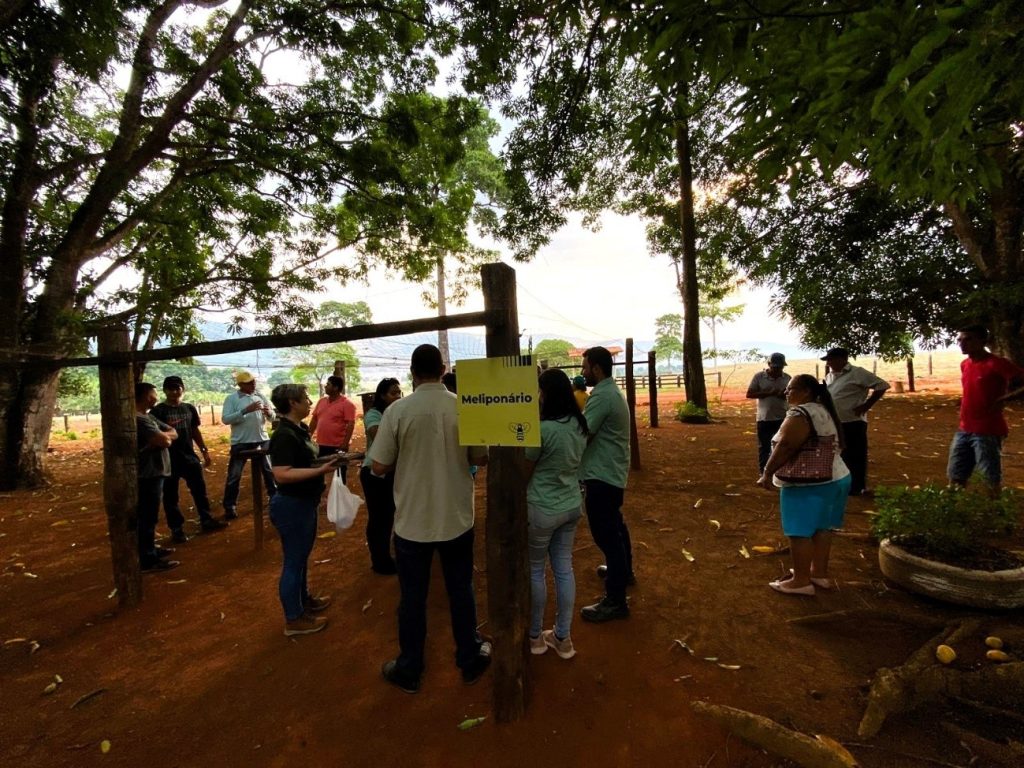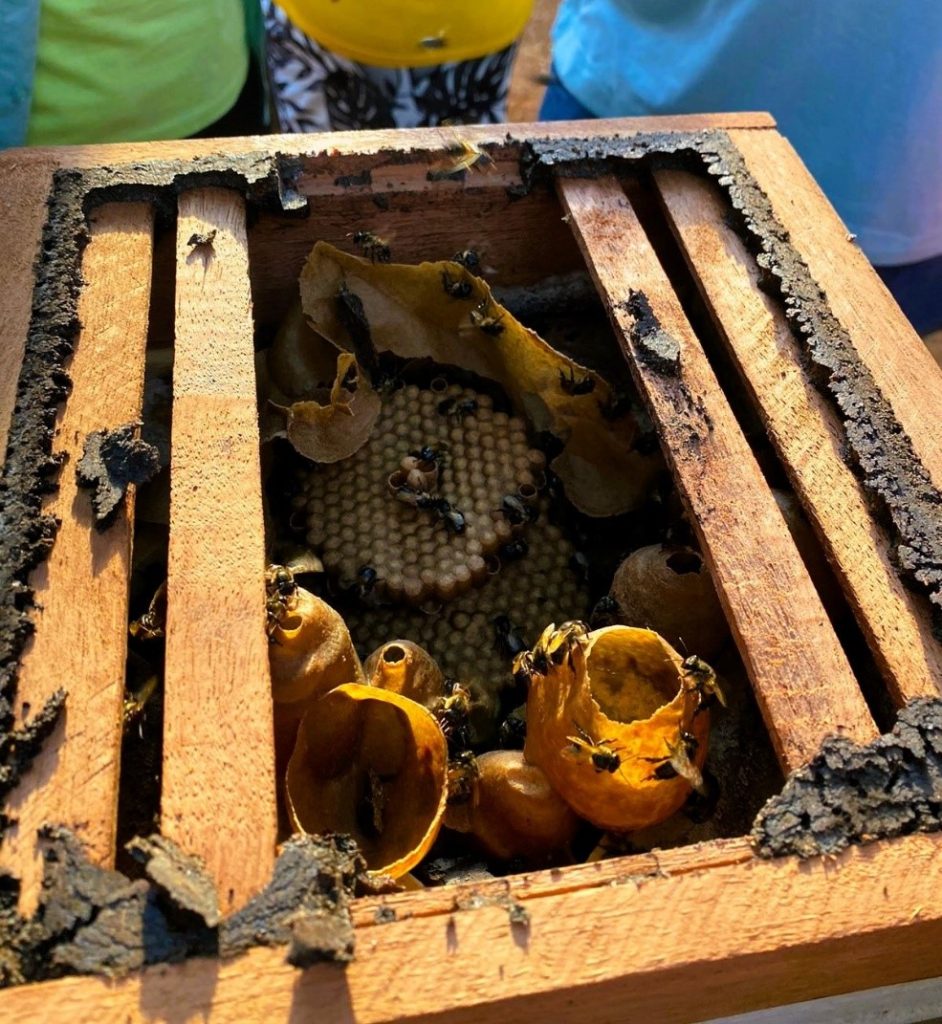Learn about the Beeterra project, a social initiative led by Belterra that offers new perspectives to women in the Amazon region

Created as a social arm of Belterra Agroflorestas in Parauapebas, Pará, the Beeterra stingless beekeeping project combines the potential of the Amazonian bioeconomy with women’s empowerment. The initiative, which receives support from Fundo Vale and the Brazilian government’s agricultural research agency, Embrapa, involves rural women and symbolizes a sustainable, inclusive business model with the potential to scale up.
The project was created in parallel with Belterra’s implementation of agroforestry systems in the region, based on the observed low participation of women in economic activities. “Women wanted a business of their own, in which they were the protagonists. The participants, mostly wives and daughters of farmers, take care of the crops, the house and the children. Thanks to the Amazon’s native bees, they now have a complementary activity that can be done in their backyard, without any risks,” explains Daniela Canisso, Belterra partner and administrative director. The startup’s goal is to expand the project and integrate native honey into the production of agroforestry systems across the Amazon, creating a bioeconomy product backed by a sustainable origin certification.
“Stingless beekeeping combined with the implementation of agroforestry systems amplifies the social and environmental impact we seek in the habitat restoration activities carried out as part of Vale’s 2030 Forest Goal. This initiative strengthens women’s autonomy and can become a prominent bioeconomy business in the community, as well as contributing to the preservation and perpetuation of local people’s traditional know-how,” says Bia Marchiori, head of the technical, knowledge, and social and environmental safeguards area of Vale’s 2030 Forest Goal.
Beekeeping
Stingless bees native to the Amazon, such as the jataí and uruçu varieties, do not have stingers, unlike the European honey bee (Apis mellifera) and buff-tailed bumblebee (Bombus terrestris). This feature makes their cultivation safer and eliminates the need for complex protective equipment. As a result, production is more accessible and the initial equipment costs are lower.
Managing native Amazonian bees is also simpler, carried out in wooden boxes with separate areas for nesting and honey. A colony can take several years to establish itself and start producing. The activities of the women in the program include periodic inspections, pest control, swarm division and sustainable honey harvesting, always leaving some for the bees.
Environmental health indicators
Daniela Canisso highlights the role of native bees as “environmental thermometers,” that is, effective bioindicators of ecological health. The presence and abundance of these bees in a region signal the availability of balanced floral resources, reflecting the quality of the ecosystem. In Belterra’s agroforestry systems, the presence of bee colonies serves as clear evidence of successful habitat recovery.

Traditional food, medicinal product and gourmet ingredient
For traditional communities in the Amazon, honey from native bees is a valuable food, consumed pure as a source of energy and a natural sweetener, or incorporated into traditional dishes and beverages. Due to its nutritional value, it is considered an important component of the diet and food culture of these people.
Honey from Amazonian bees also stands out for its uses in traditional medicine. For example, jataí bee honey is popularly used as eye drops to treat eye infections, while this and other honey types from stingless bees are used to treat respiratory problems, among other things. This medicinal value is deeply rooted in the knowledge of traditional communities, which have used these different types of honey for a variety of therapeutic purposes for centuries.
Daniela Canisso points out that in the market, honey from native bees is seen as a gourmet product, with chefs often acting as “ambassadors” by exploring its distinctive taste. The great value of this honey in gastronomy lies in its vast sensory diversity, depending on the bee species and local flora, offering unique flavors ranging from floral to slightly fermented, thus enabling innovative culinary creations.
About World Bee Day
World Bee Day, May 20, was designated by the United Nations to raise awareness about the crucial importance of these pollinators. Bees are fundamental to ecosystem balance through pollination, which ensures the reproduction of countless wild plants and agricultural crops, sustaining biodiversity and food production. The preservation of bees is considered urgent by the scientific community, especially in the face of threats such as habitat loss, pesticide use and the impacts of climate change, which threaten food security and the planet’s resilience.
